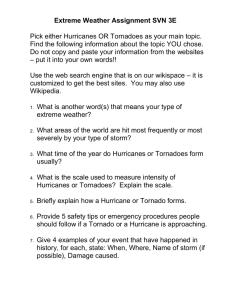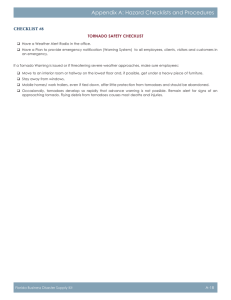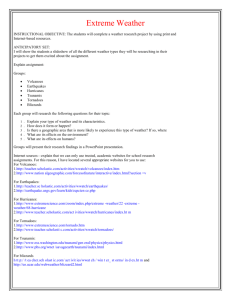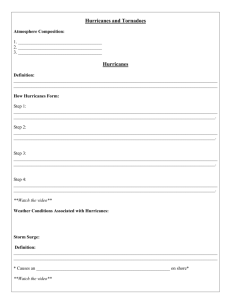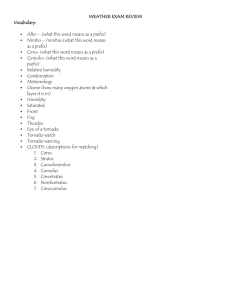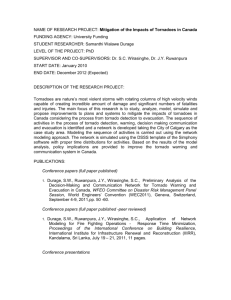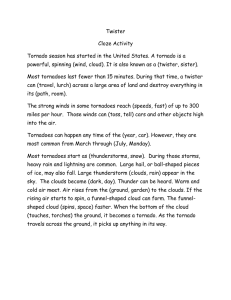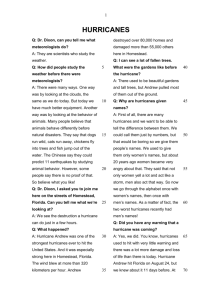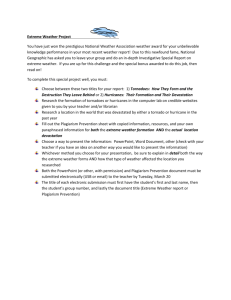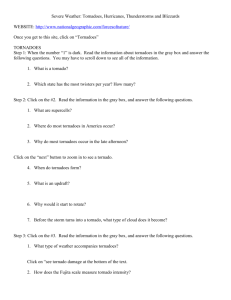12 *Did you know* facts:
advertisement
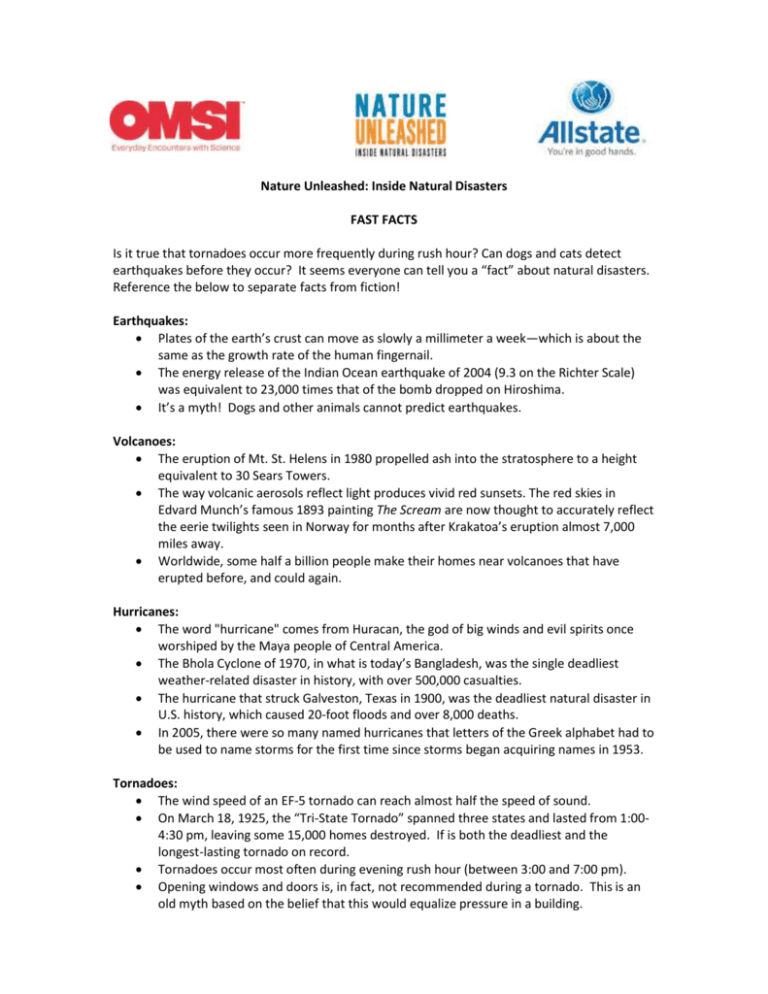
Nature Unleashed: Inside Natural Disasters FAST FACTS Is it true that tornadoes occur more frequently during rush hour? Can dogs and cats detect earthquakes before they occur? It seems everyone can tell you a “fact” about natural disasters. Reference the below to separate facts from fiction! Earthquakes: Plates of the earth’s crust can move as slowly a millimeter a week—which is about the same as the growth rate of the human fingernail. The energy release of the Indian Ocean earthquake of 2004 (9.3 on the Richter Scale) was equivalent to 23,000 times that of the bomb dropped on Hiroshima. It’s a myth! Dogs and other animals cannot predict earthquakes. Volcanoes: The eruption of Mt. St. Helens in 1980 propelled ash into the stratosphere to a height equivalent to 30 Sears Towers. The way volcanic aerosols reflect light produces vivid red sunsets. The red skies in Edvard Munch’s famous 1893 painting The Scream are now thought to accurately reflect the eerie twilights seen in Norway for months after Krakatoa’s eruption almost 7,000 miles away. Worldwide, some half a billion people make their homes near volcanoes that have erupted before, and could again. Hurricanes: The word "hurricane" comes from Huracan, the god of big winds and evil spirits once worshiped by the Maya people of Central America. The Bhola Cyclone of 1970, in what is today’s Bangladesh, was the single deadliest weather-related disaster in history, with over 500,000 casualties. The hurricane that struck Galveston, Texas in 1900, was the deadliest natural disaster in U.S. history, which caused 20-foot floods and over 8,000 deaths. In 2005, there were so many named hurricanes that letters of the Greek alphabet had to be used to name storms for the first time since storms began acquiring names in 1953. Tornadoes: The wind speed of an EF-5 tornado can reach almost half the speed of sound. On March 18, 1925, the “Tri-State Tornado” spanned three states and lasted from 1:004:30 pm, leaving some 15,000 homes destroyed. If is both the deadliest and the longest-lasting tornado on record. Tornadoes occur most often during evening rush hour (between 3:00 and 7:00 pm). Opening windows and doors is, in fact, not recommended during a tornado. This is an old myth based on the belief that this would equalize pressure in a building.
